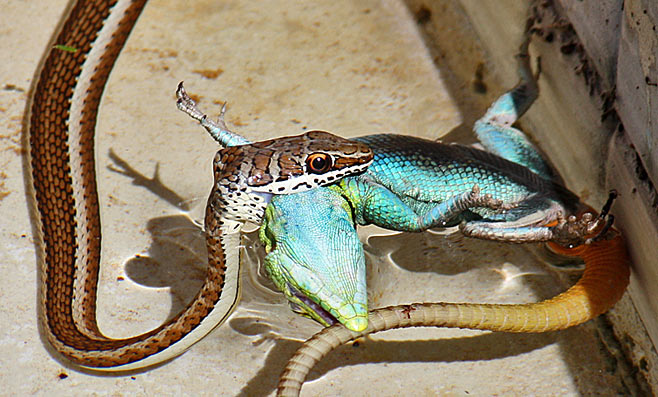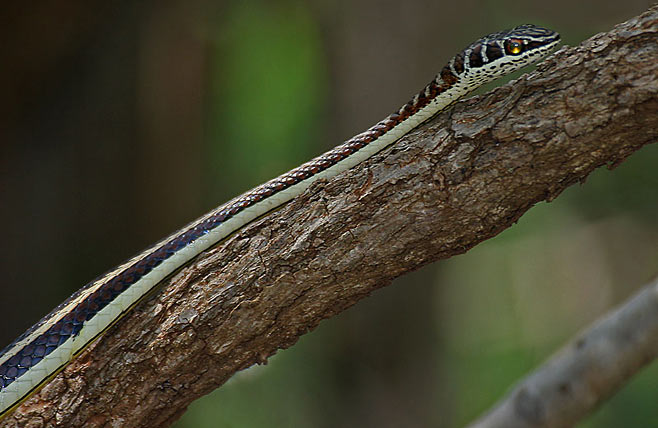|
Psammophis subtaeniatus (Western stripe-bellied sand
snake)
Westelike gestreepte sandslang [Afrikaans]; Umhlwazi [Xhosa]
Life >
Eukaryotes
>
Opisthokonta >
Metazoa
(animals) > Bilateria > Deuterostomia >
Chordata >
Craniata > Vertebrata (vertebrates) > Gnathostomata (jawed vertebrates) >
Teleostomi (teleost fish) > Osteichthyes (bony fish) > Class:
Sarcopterygii (lobe-finned fish) > Stegocephalia (terrestrial vertebrates) >
Tetrapoda
(four-legged vertebrates) > Reptiliomorpha > Amniota >
Reptilia (reptiles) >
Romeriida > Diapsida > Lepidosauromorpha > Lepidosauria >
Squamata > Serpentes
(snakes) > Family: Colubridae > Subfamily:
Psammophinae > Genus:
Psammophis
 |
|
Psammophis subtaeniatus with Common Flat
lizard (Platysaurus intermedius cf. rhodesianus) that is has captured. [photo Lorinda Steenkamp
©] |
 |
|
Psammophis subtaeniatus (Western stripe-bellied sand
snake), Kruger National Park, c 0.7 m in length. [photo Jim Scarff ©] |
Identification
The Western stripe-bellied sand snake can be identified by
its slender head, large eyes, yellow underside, the stripes down the length of
its body and strictly diurnal lifestyle. It grows to an average length of 1
meter and a maximum length of 1.4 meters.
Distribution and habitat
his snake species is found in Namibia, Botswana, Limpopo,
Mozambique and Zimbabwe. Its favoured habitat is arid savanna where it occurs in
mopane veld.
Food
Eats lizards,
rodents, birds
and
frogs.
Predators, parasites and disease
Eaten by
birds of prey (particularly
secretary birds and
snake eagles)
and other snakes.
Reproduction
Oviparous (egg-laying), lays between 4 and 10 eggs in
summer.
Longevity
Likely to have an average lifespan of
10 years.
Medical importance
Although venomous is not dangerous to man.
Links
References
-
Broadley, D.G. 1983. FitzSimons' Snakes of Southern
Africa. Delta Books, Johannesburg.
-
Marais, J. 2004. A Complete Guide to Snakes of
Southern Africa. Struik Publishing, Cape Town.
|
